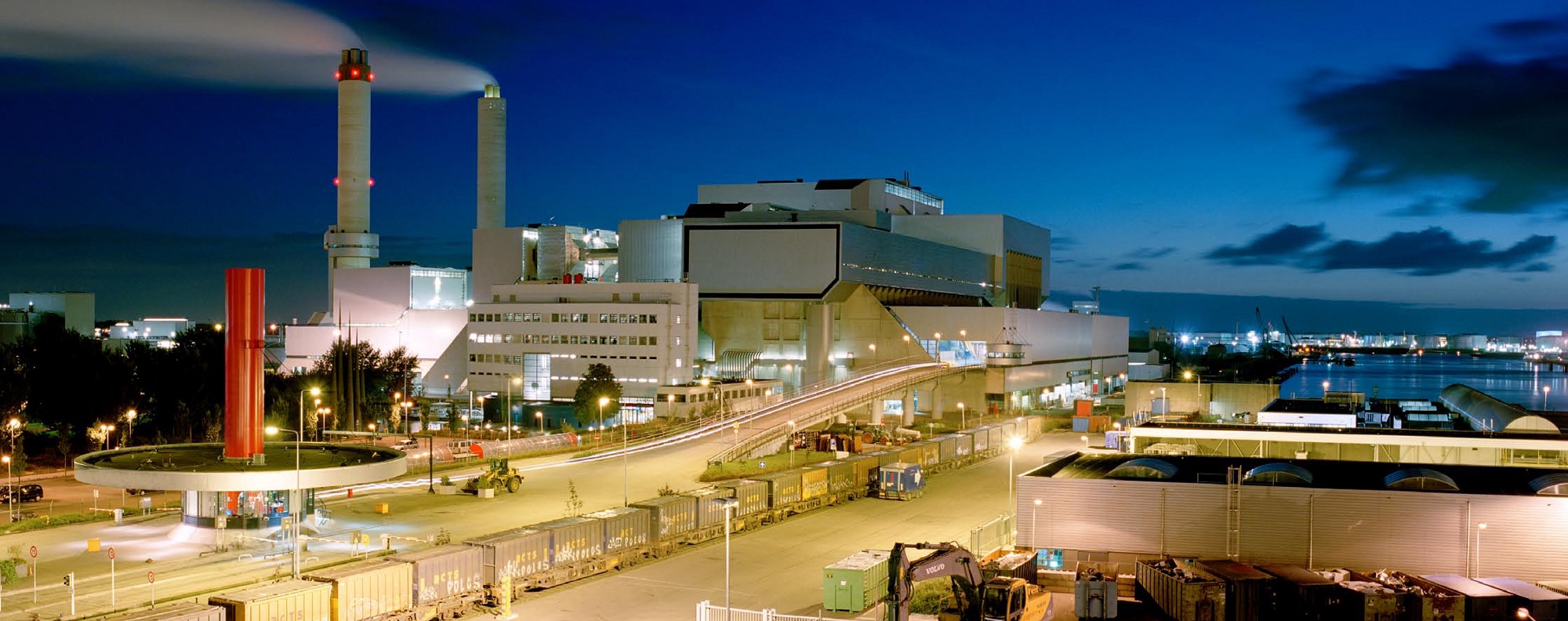We are supposed to stop using gas. More heating for our homes is being piped from waste incineration plants. That won’t go well for long, Delft researchers warn.
Less waste also means less fuel for incineration plants and thus less heating for the heating grid. (Photo: AEB)
Incineration plants are connected to the heating grid in the cities of Amsterdam, Rotterdam, Arnhem and Nijmegen and are thus an important source of heating. But conflicting interests of the Dutch Government are leading to a problem, explained Robert Corijn of Attero, a waste incineration company, recently in the current affairs programme ‘Nieuwsuur’.
On the one hand, The Hague wants to remove 1.5 million homes from the gas grid by 2030. In accordance with the climate agreement, half of these will then be connected to a district heating grid. At the same time, the Cabinet is intending to be ‘completely circular’ by 2050. This means that we will produce much less waste. At present, on average each person throws away 190 kilos of residual waste every year. This must be reduced to 100 kilos in 2020. But less waste means less fuel for the incinerator.
Fewer district heating connections
“It would be smart if local authorities put things on hold and connect fewer heating grids to incineration plants,” says Jan-Henk Welink of the Duurzaam Grondstofbeheer (sustainable resource management) platform at TU Delft when asked. “If they don’t, we will be stuck with unjustifiable long redundant incineration plants for the next 20 years.”
Welink predicts that households will install solar panels on their roofs really quickly. “Solar panels combined with heat pumps could supply the energy demand when we move away from gas. We won’t need the incineration plants for heating anymore. I expect that we will be at this point in five years’ time.”
‘The waste incinerators have played the market well’
But generating heating through waste incineration is a lucrative business. “Incineration plants earn a lot of money. Some have even invested in heating grids themselves, and these must be repaid. They have often involved the municipalities and provinces so that these authorities are stuck in terms of policy. They have played the market well,” concludes Welink.
To continue their operations, waste incinerators are planning to import more waste from abroad. They are already doing this – 1,900 kilotons a year. This equates to about one quarter of the total waste generated in the Netherlands that ends up in the incinerators. Most of it comes from Great Britain. But last June, Minister Eric Wiebes announced that a levy will be imposed on imported waste from abroad. The waste incineration companies are lobbying against this levy.
Welink believes that these waste processors are crying crocodile tears. “They should have seen these developments coming.”
That we must incinerate less waste and stop importing waste is unquestionable. “One quarter of the waste turns into bottom ash that is full of heavy metals. We can use this for the interior of things like noise barriers. But they must be hermetically sealed from the outside world and they need constant checking to make sure that nothing leaches into the environment.”
‘Fly ash is so dirty that you can hardly do anything with it’
“And,” Welink continues, “we will also be stuck with fly ash. This is so dirty that you can hardly do anything with it. It is used in asphalt and cement but you don’t even really want to do this as it makes the recycling of this asphalt and cement very difficult at a later stage. So what happens is that fly ash is often just dumped.”
To Welink’s mind, importing waste is appeasing the recycling intentions of Britain. It would be better for the environment if they went and recycled their own waste.
Recycling expert Maarten Bakker (CEG) points out that apart from solid residual waste, the incineration process emits greenhouse gases. “These mostly comply with the legal limits, but it is not clear whether these limits take the effect of years of accumulation on the immediate area into consideration.”
‘Most incineration plants should close’
“If we do not import waste from abroad anymore, I expect that the waste incineration capacity in the Netherlands will halve in 10 to 20 years. Most of the 12 ovens currently in use could then close,” says Bakker. “But ironically, it is precisely the climate goals and the need to stop using gas that will lead to the continuation of importing waste. And nothing much will change for the incineration plants.”
One uncertain factor is Brexit. “The British waste policy may change after Brexit. Who knows, the supply of waste from abroad may become less reliable and pose a greater risk to incineration companies.”
Update 1-10-2019
In a written response, the Dutch Waste Management Association states that the waste imported by Dutch incinerators from the United Kingdom is ‘non-recyclable waste’. “It is the material that remains after sorting and recycling.” This material is also known as Refuse Derived Fuel (RDF). The statement that less waste is recycled in the UK as a result of the Dutch import is therefore incorrect, according tot the association.
Jan-henk Welink says that he has doubts about the effectiveness of post-sorting in Great Britain. “If the British can easily get rid of the RDF, they will have no incentive to improve their post-separation facilities.”
Robert Corijn of waste incinerator Attero also responded. “Landfilled waste leads to massive methane emissions. By importing waste that would otherwise be landfilled and converting it into energy, we ultimately reduce greenhouse gas emissions.”
Do you have a question or comment about this article?
tomas.vandijk@tudelft.nl


Comments are closed.